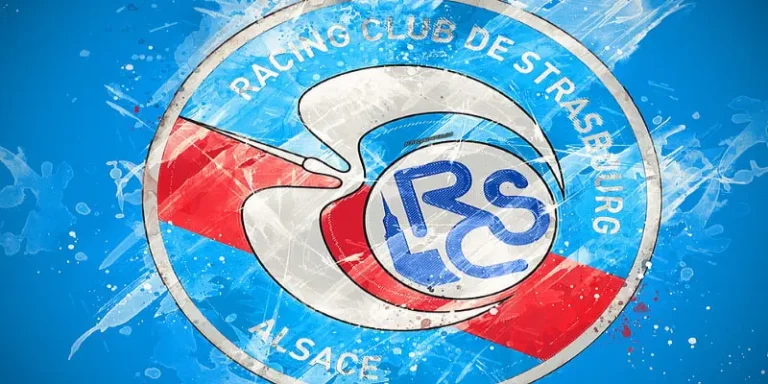
Why the UEFA Champions League Still Rules Europe
The UEFA Champions League isn’t just a tournament—it’s football’s grandest opera. Every season, Europe’s elite clubs collide in a spectacle of passion, pressure, and unforgettable moments. From last-minute screamers to underdog miracles, this competition crafts football folklore with every whistle. Beyond the silver trophy lies a legacy of fierce rivalries, dramatic comebacks, and iconic heroes. More than sport, the Champions League is a ritual for fans worldwide—a cultural heartbeat that turns Tuesday and Wednesday nights into sacred events. As the lights shine and anthems echo, one truth remains: nothing matches the drama of the UEFA Champions League.
UEFA Champions League Format Explained
Understanding the structure of the UEFA Champions League is crucial to appreciate the level of competition featured within the tournament. The format has undergone transformations to increase competitiveness, allowing more clubs to showcase their talent on the grand stage of European football.
By examining the tournament’s structure, fans gain insight into how clubs progress through the competition and what it takes to ultimately hoist the Champions League trophy.
Group Stage
The tournament kicks off with the group stage, consisting of 32 teams divided into eight groups. Each group features four teams that engage in a round-robin format. Teams play each other home and away, gathering points to determine which clubs progress to the knockout stages.
This initial phase serves as a foundation for the tournament, as clubs vie for points to secure their place in the Round of 16. The excitement of close group standings amplifies the intensity of matches, with every point becoming crucial as clubs seek to advance.
Knockout Stage
The knockout stage commences following the completion of the group phase, transitioning to a more high-stakes format. The 16 clubs that advance are paired against one another, with the winners determined by aggregate score across two legs.
This round intensifies the drama, as teams must not only perform well at home but also secure positive results away. The unpredictability of the knockout draw adds an extra layer of intrigue, as teams can face familiar foes or new opponents in their quest for glory.
The Final
After a series of thrilling matches, the ultimate goal culminates in the Champions League final. The final represents the apex of club football, where the two remaining teams clash to determine the champion.
Held at prestigious venues, the final draws massive global viewership, showcasing the pinnacle of football. The atmosphere surrounding the title match emanates excitement and tension, as clubs aim to etch their names into football history by winning the coveted UEFA Champions League trophy.
Notable UEFA Champions League Finals
Throughout its rich history, the UEFA Champions League has witnessed some of the most memorable finals in football. The drama, emotions, and narratives that unfold during these decisive matches have become etched in the minds of fans across the globe.
These finals not only showcase the quality of football but also highlight the climactic moments that define what it means to be a champion in European club football.
Liverpool vs. AC Milan (2005)
The 2005 final held in Istanbul remains one of the most remarkable matches in Champions League history. Liverpool found themselves trailing 3-0 at halftime against a dominant AC Milan side. Miraculously, Liverpool mounted an incredible comeback, scoring three goals in a span of six minutes during the second half.
The final culminated in a penalty shootout, where Liverpool sealed their victory, marking one of the greatest comebacks in the tournament’s history. This match became a symbol of hope and resilience, embodying the unpredictable nature of football.
Manchester United vs. Bayern Munich (1999)
Another iconic final occurred in 1999, when Manchester United faced Bayern Munich. In a match where Bayern controlled the proceedings, it appeared they would claim the title. However, in the dying moments, Manchester United staged a remarkable turnaround, scoring two late goals to secure a dramatic victory.
This final emphasized the notion of ‘never giving up,’ as United showcased the fighting spirit that would come to define their legacy under Sir Alex Ferguson. It was a final that exemplified the beauty and unpredictability of football.
Real Madrid vs. Atlético Madrid (2016)
The rivalry between Real Madrid and Atlético Madrid reached new heights in the 2016 final, marking the two teams’ historic clash in the Champions League. The match took place at the iconic San Siro stadium, creating an electric atmosphere as both teams aimed to secure continental supremacy.
After extra time and a tense penalty shootout, Real Madrid emerged victorious, securing their 11th title. This final showcased the intensity and passion inherent in the Champions League, representing the Spanish capital’s footballing dominance.
The Impact of the UEFA Champions League on Football
The UEFA Champions League has transcended its role as a mere tournament, becoming a cultural phenomenon that influences football worldwide. It has reshaped how clubs operate, interact with fans, and approach player recruitment.
Examining the broader impact of the Champions League provides a deeper understanding of its significance beyond the trophy count, emphasizing its role in shaping the future of the game.
Economic Influence
The UEFA Champions League has a substantial economic impact on participating clubs, contributing to increased revenue streams through ticket sales, merchandise, and broadcasting rights. Clubs that perform well and reach the knockout stages benefit financially, providing an incentive for investment in talent and resources.
The financial windfall also allows clubs to expand their global reach, invest in youth academies, and modernize facilities, further bolstering their chances of competing at the highest level in subsequent seasons.
Promotion of Young Talent
The Champions League serves as a platform for young and emerging talents to showcase their abilities on a grand stage. Clubs recognize the potential value of youth players, providing them opportunities to shine in high-stakes matches.
This focus on nurturing young talent aligns with the tournament’s vision, allowing clubs to identify future stars while giving players the chance to test themselves against the best in Europe. The exposure gained through the Champions League can propel talented players into larger markets and increase their bargaining power.
Cultural Exchange
The Champions League fosters cultural exchange through the international nature of its matches. Clubs from different countries and leagues come together, showcasing diverse playing styles and fan cultures.
This dynamic not only enriches the tournament but also broadens horizons for fans worldwide. Football unites communities, and the Champions League exemplifies how the sport can transcend borders, culminating in a shared passion that brings together people from different walks of life.



